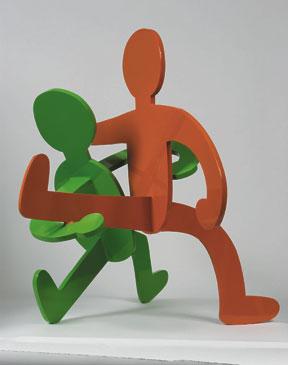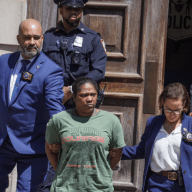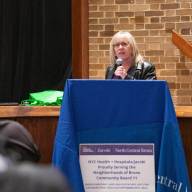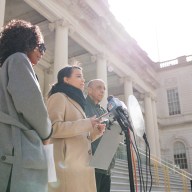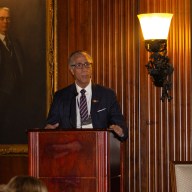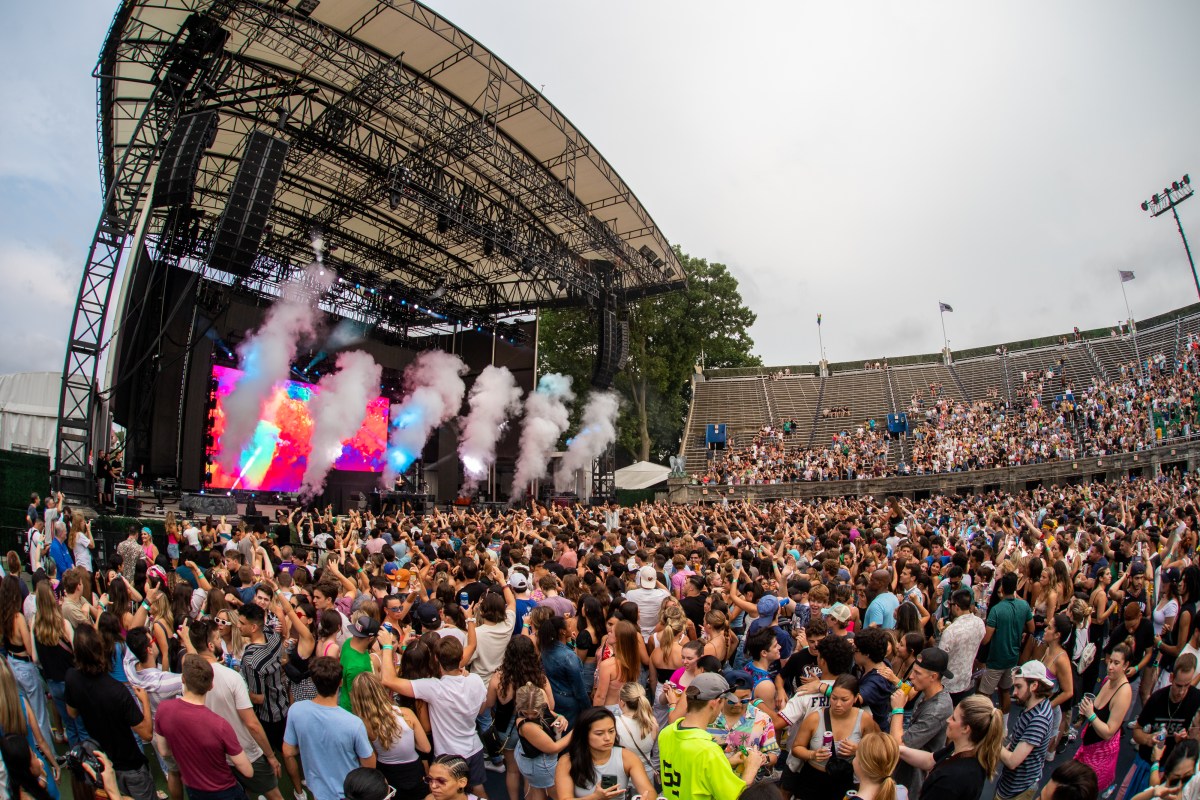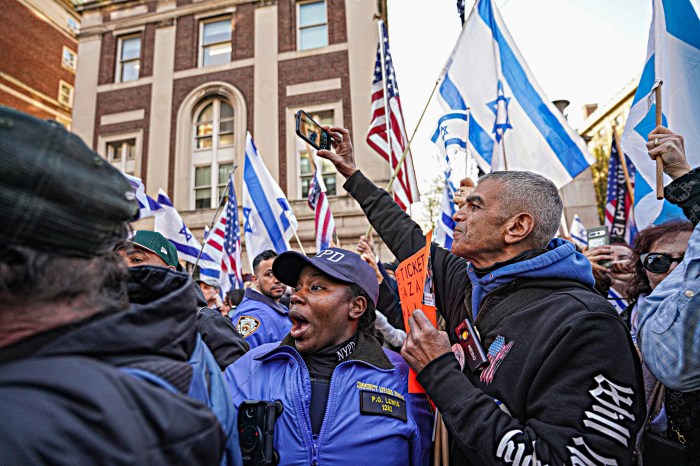Lehman Center for the Performing Arts, known for presenting the best international dance and affordable family entertainment, brings the hip, dazzling and utterly mesmerizing BREAK! The Urban Funk Spectacular to its state-of-the-art Concert Hall on Sat., Feb. 7, at 8 pm. The Lehman Center for the Performing Arts Concert Hall is located at 250 Bedford Park Boulevard West on the campus of Lehman College. Tickets are affordably priced at $35, $30, $25 & $20 with tickets for children 12 and under at only $10 for any seat.
Tickets may be purchased by calling (718) 960-8833.
BREAK! The Urban Funk Spectacular has astounded audiences of all ages throughout the world as it traces the history of Hip Hop Dancing over the last thirty years. It’s a high energy tribute to this creatively-charged, Bronx-born, American art form. A combination of pure physical strength and agility propels this group of New York’s finest urban artists through a show of breathtaking movements to a pumping soundtrack with a live DJ and master percussionists. Cast members are supremely talented artists from the world of “Breakdancing,” “Locking,” “Electric Boogaloo,” “Popping,” and “Power Tumbling,” as well as DJ-ing and Bucket Drumming. Many have been featured soloists with such show-business legends as Madonna, Janet Jackson, 50 Cent, Ringo Starr, Whitney Houston, P. Diddy and Luther Vandross.
A distinctive American art form that runs deep through the streets of inner cities, Hip Hop is comprised of five elements – Dance, MC (or “rap”), DJ, Graffiti, and Fashion – each component is improvised and recombined in a myriad of rhythms and styles so that Hip Hop reinvents itself continually.
Hip Hop’s dance elements hearken back to an African tradition, involving a variety of footwork patterns, spinning and gymnastic type moves. Hip Hop dancing has been heavily influenced by a number of sources from James Brown to Brazilian capoeira dance to the extremely popular Martial-arts films of the 1970s. The term, “Breakdancing” arose with the growing recognition of this art form by the media. The early 80’s “battles” between dance crews, attracted the attention of the public and “Breaking” “B-Boy-ing” or “Breakdancing” became associated with other street dance styles such as “Locking” and “Popping.”
* * *
The Bruce Museum in Greenwich, CT, showcases 45 masterpieces of modern sculpture in its major winter exhibition, Innovations in the Third Dimension: Sculpture of Our Time, illustrating how virtually every time-honored idea about sculpture has been challenged in the 20th and 21st centuries. Opening on Sat., Jan. 24, and running through Sun., May 24, the exhibition addresses the radical changes in the size, media, presentation, and techniques of sculpture that have created exciting and startling new possibilities for the medium.
Drawn from the rich local collections of Greenwich and its environs, the exhibition is supported by UBS Private Wealth Management, Withers Bergman LLP, the Charles M. and Deborah G. Royce Exhibition Fund, the Seiden-Luke Fund for Exhibitions and Publications, and a Committee of Honor co-chaired by Lisa and Richard Baker and Amy and Sid Goodfriend. Innovations in the Third Dimension: Sculpture of Our Time has been organized by the Bruce Museum and curated by Nancy Hall-Duncan, Bruce Museum Senior Curator of Art. An accompanying hard cover catalogue with an essay by Ms. Hall-Duncan, a sculpture time line by Dr. Joan Pachner, an authority on modern sculpture, and artists’ biographies written by Anna Juliar, the Bruce Museum Lillian Butler Davey Resident Intern is being published. An Audio Tour Guide of the exhibition sponsored by Lucy and Nat Day is available free for cell phone users. A full schedule of public programs including lectures and a film series is being presented in conjunction with the exhibition. For details, visit the Bruce Museum website at www.brucemuseum.org.
From ancient times through the end of the 19th century, sculpture was defined as statuary, either modeled from a soft material, such as clay, or carved from a hard material, such as marble or wood, and displayed on a pedestal or plinth. The virtual explosion of materials used by sculptors is a hallmark of the past century – traditional media have given way to plastic, vinyl, cardboard, glass, cement, concrete, hair, leather, milk, mirrors, neon light, and even chewing gum, dust, pollen, and body fluids. Sculptural techniques such as modeling and carving have been expanded to include welding, sewing, scattering, assembling, using “found” objects, and countless other methods. Sculpture has been taken off its pedestal, dangled from the ceiling, set into motion, and transformed by technological breakthroughs. It has become performance art, environmental sculpture, installation art, earthwork, light art, and a stunningly wide spectrum of other forms.
Early works in the exhibition include examples by the late 19th-century genius Auguste Rodin and early 20th-century modernists such as Alexander Archipenko and Alexander Calder. Mid-20th century sculptures by Louise Nevelson, Henry Moore, David Smith, and others are on view with more recent, cutting-edge contemporary sculpture by Marc Quinn, Antony Gormley, Do Ho Suh and the artistic team of Sue Webster and Tim Noble, among others.
The museum is located at 1 Museum Drive in Greenwich, CT, USA. For information call (203) 869-0376.
* * *
The Riverdale-Yonkers Society for Ethical Culture presents Music on Film on Sat., Jan. 31, at 7 pm at the Society Meeting House, 4450 Fieldston Road, corner of Manhattan College Parkway.
The society will present historical performances on film The Concerto. Bach Violin Concerta in A minor will be performed by David Oistrahk, the Tchaikosky Piano Concerto by Martha Argerich and the Beethoven Violin Concerto will be performed by Maxim Vengerov.
Admission is $5. For more information call (718) 549-2795.
* * *
The Riverdale-Yonkers Society for Ethical Culture will show The Band’s Visit on Sat., Feb. 21, at 7 pm at the Meeting House, located at 4450 Fieldston Road.
A band from Egypt, the Alexandra Ceremonial Police Orchestra with their leader, a severe man with a perpetually dour expression, crosses the street and asks a woman for directions to the Arab Cultural Center. She looks at him as if he stepped off a flying saucer.
They are in the middle of the Israeli desert, having taken the wrong bus to the wrong destination. Another bus will not come until tomorrow. The Band’s Visit begins with this premise, which could supply the makings of a comedy, and turns into a quiet, sympathetic film about the loneliness that surrounds us.
The town they have arrived at is lacking in interest even for those who live there. It is seemingly without activity. The bandleader, named Tewfig, asks if there is a hotel. But, there is no hotel.
In the morning, the band reassembles and leaves. The Band’s Visit has provided something more valuable: an interlude involving the two “enemies,” Arabs and Israelis, that shows them both as only ordinary people with ordinary hopes, lives and disappointments. It also shows two souls with rare beauty.
The running time is 175 minutes and there are adult situations in the film. Movies begin with an introduction and are followed by discussion. A donation towards the Film Club of $3 to $5 per person will be accepted at the door. The society reserves the right to provide an alternative film if a video is unavailable. For more information call (718) 548-4445.

